Trees
Jarrah (Eucalyptus marginata) and occasionally Tuart (Eucalyptus gomphocephala) or Marri (Corymbia calophylla) form the upper canopy of trees in Warwick Bushland. Tuart tends to grow on the ridges of the dunes and towers over the Jarrah and Banksia trees when mature. In most areas the Candle (Banksia attenuata) and Firewood Banksias (Banksia menziesii) occur on their own or form a second tree layer below the eucalypts. The Bull Banksia (Banksia grandis) and Sheoak (Allocasuarina fraseriana) are less common but scattered throughout the site and there are several Christmas Trees (Nuytsia floribunda). A fourth species, the Acorn Banksia (Banksia prionotes) does not naturally occur in Warwick Bushland but is in nearby reserves (such as Yellagonga Regional Park) and has been extensively planted on the margins of Warwick Bushland. Marri occurs naturally in a few patches of more fertile soil but have also been planted in the bushland.
Large older trees provide an important habitat and food source for native fauna. For example, the tree hollows in mature Eucalypts and Marri provide nesting sites for cockatoos and parrots. These trees can take 100-200 years to develop hollows that are a suitable size for nesting for the large Carnaby’s Black Cockatoo.
Each of the banksia species flowers in a different season, providing an almost continuous source of nectar and pollen for the birds and insects throughout the year. Banksia flowers and fruit also provide important food sources for birds, such as Carnaby’s Black Cockatoos (see Birds).

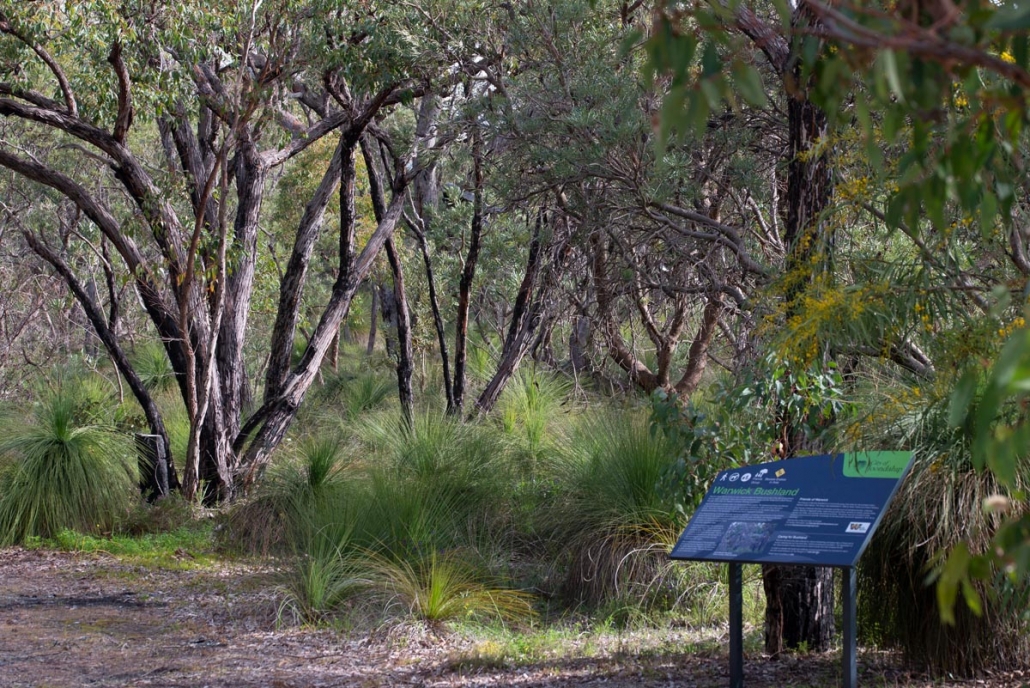
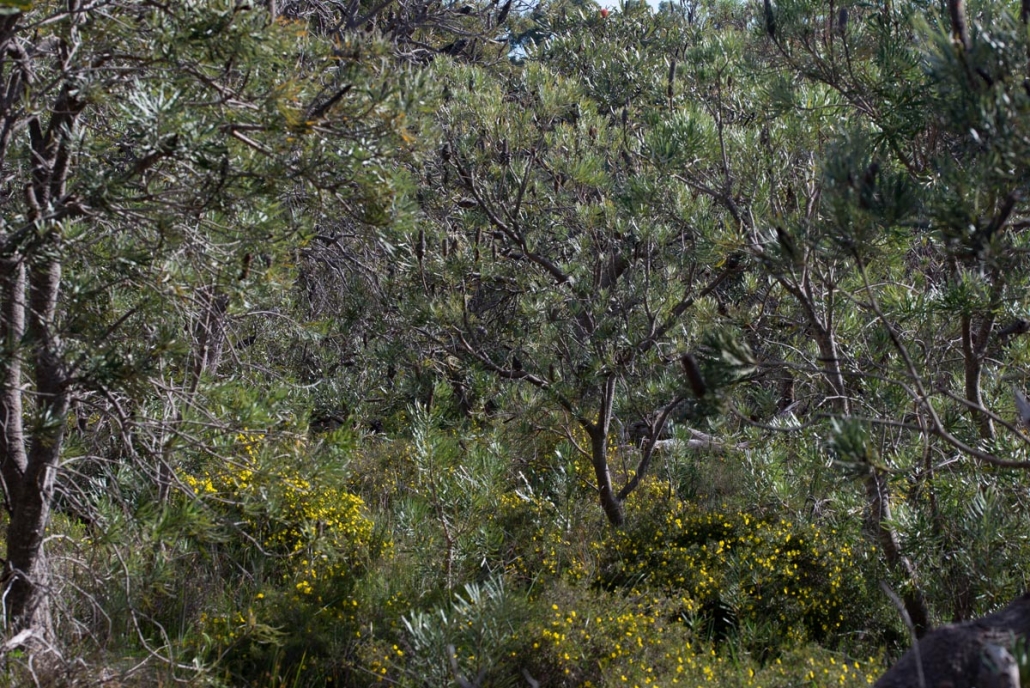
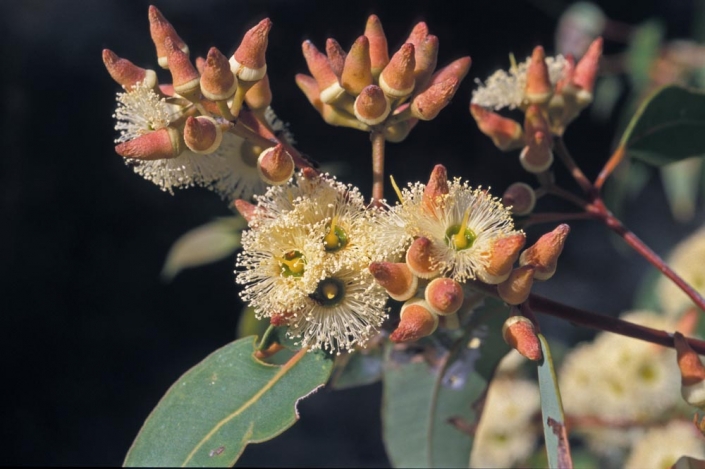
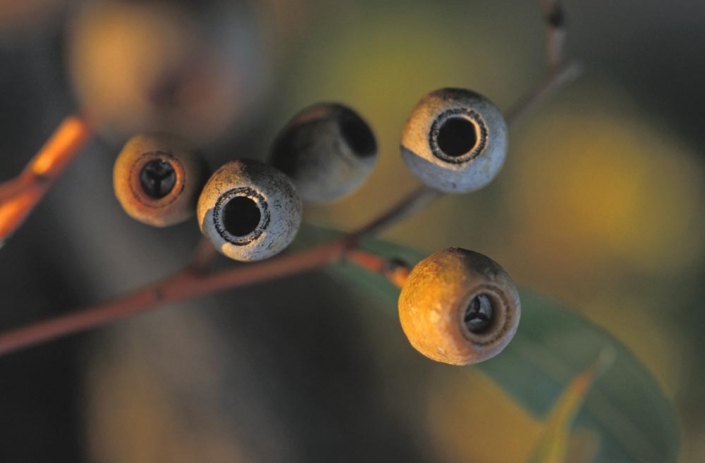
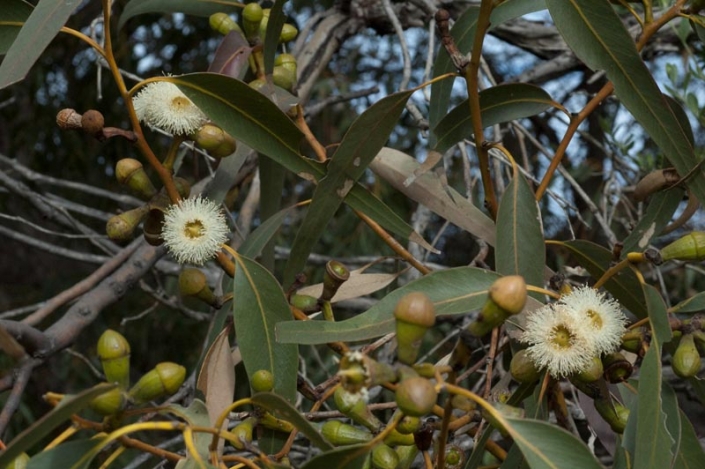
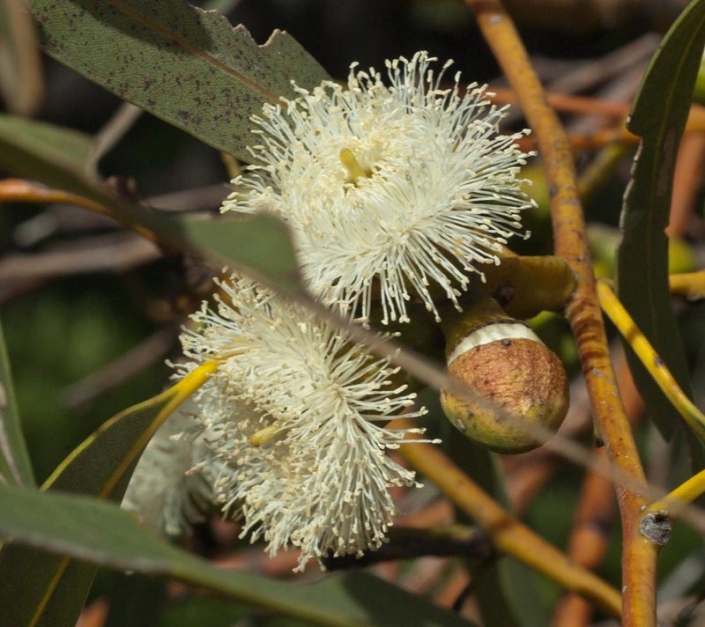
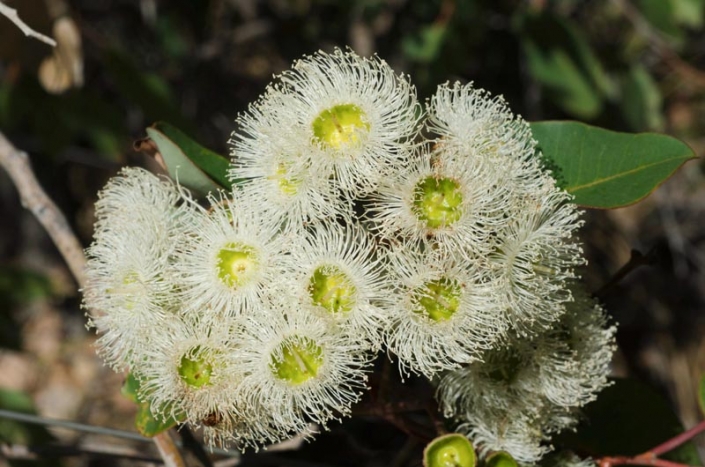
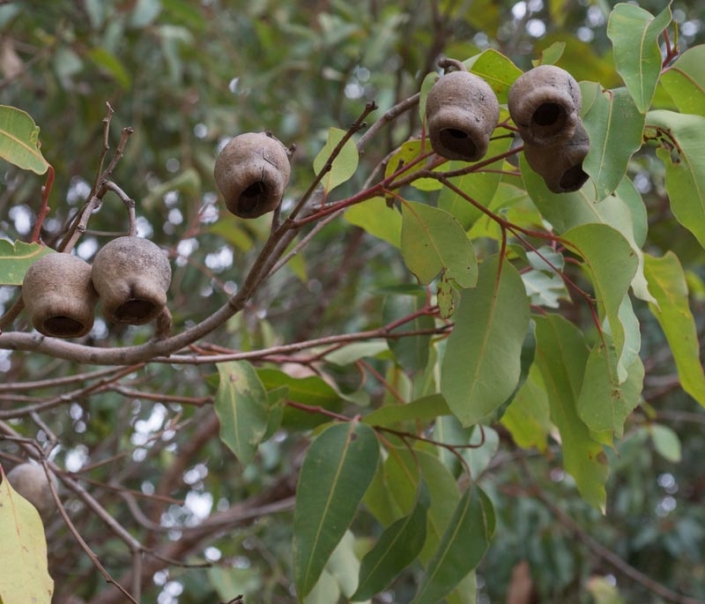
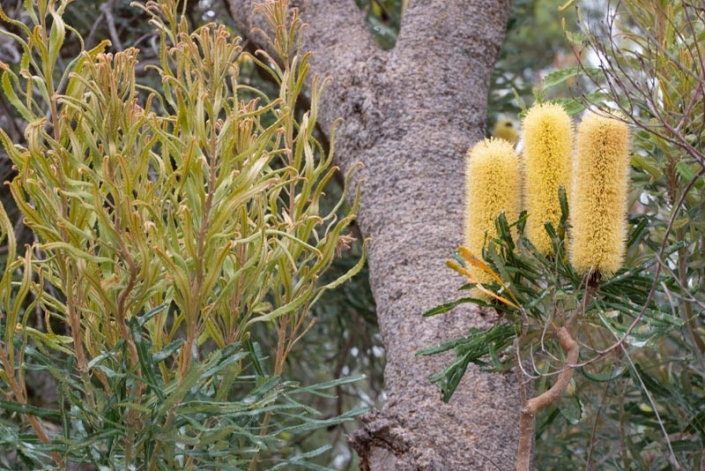

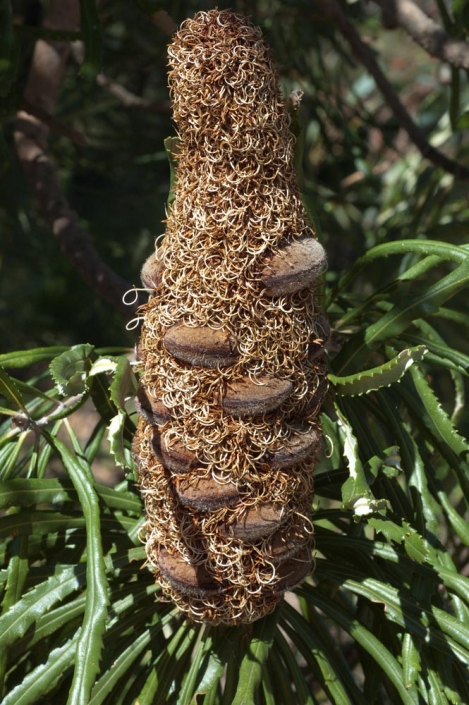
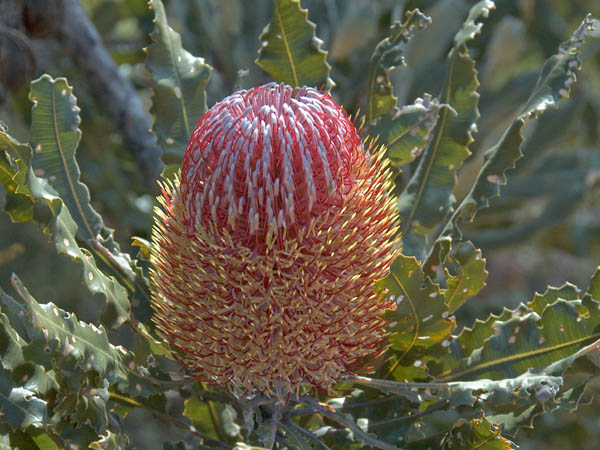




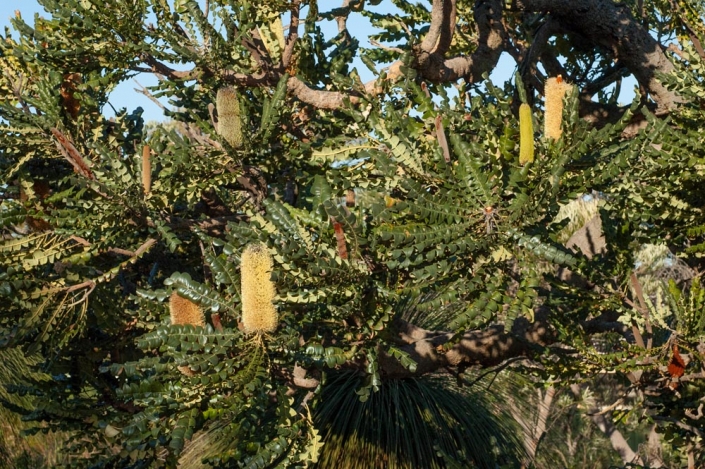
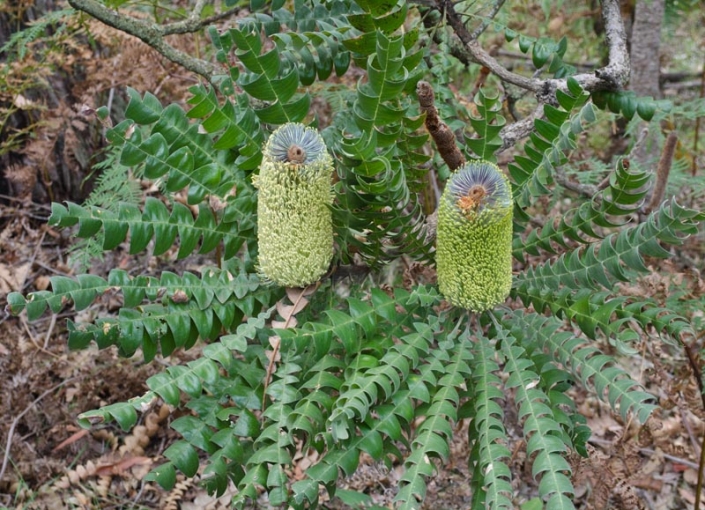


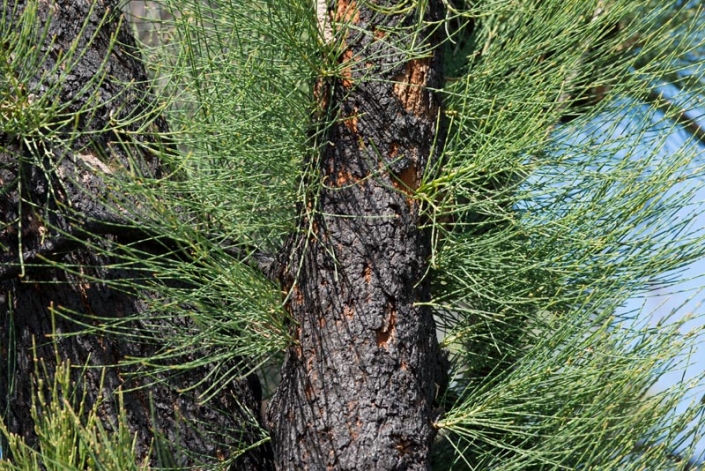
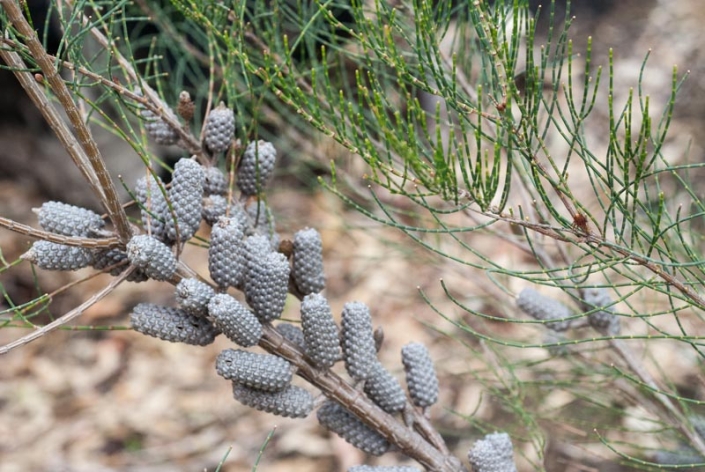
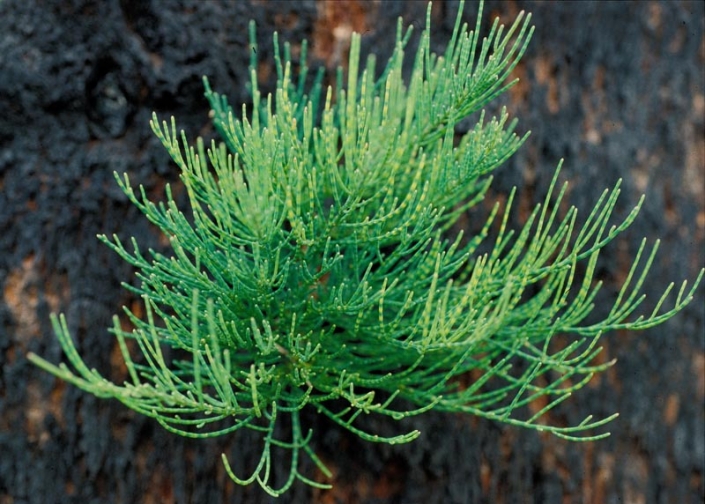
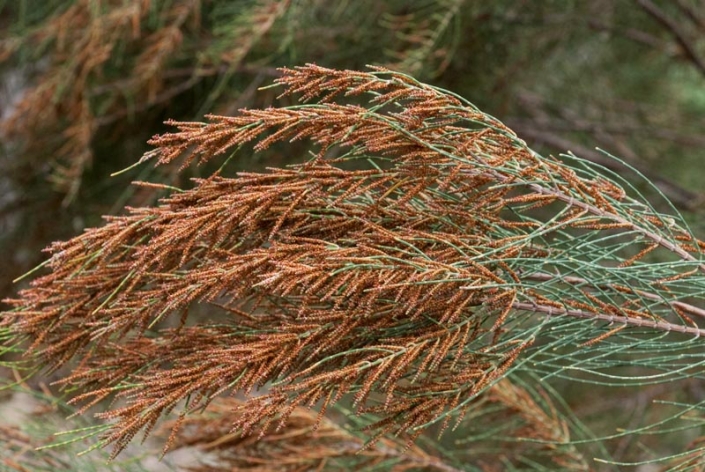

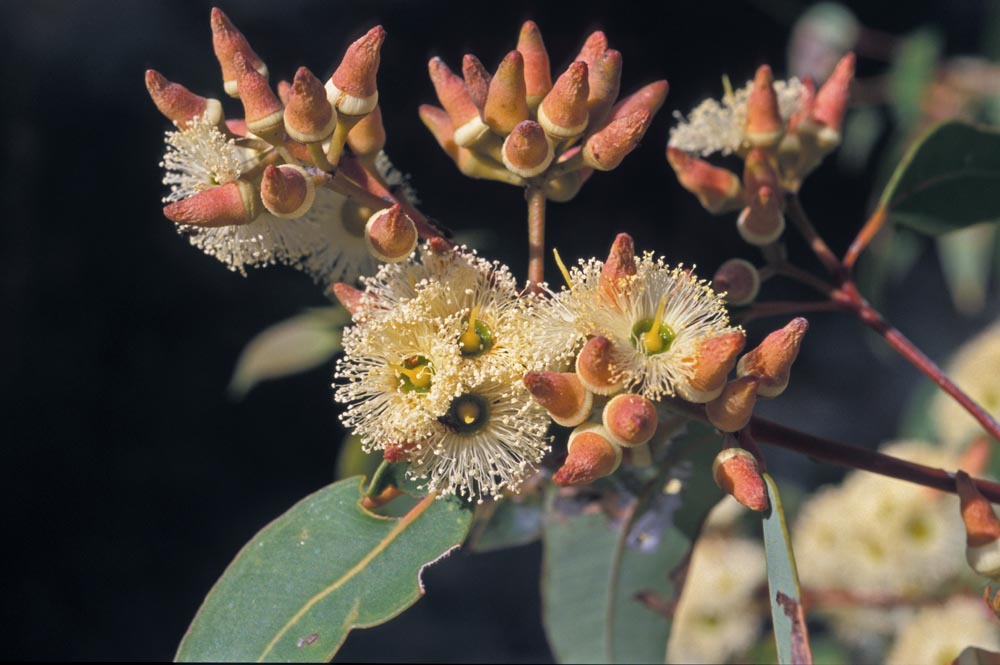


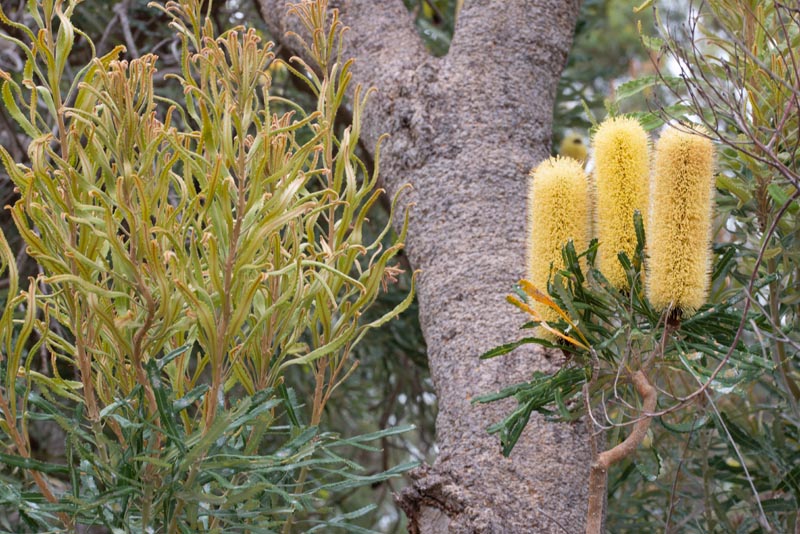

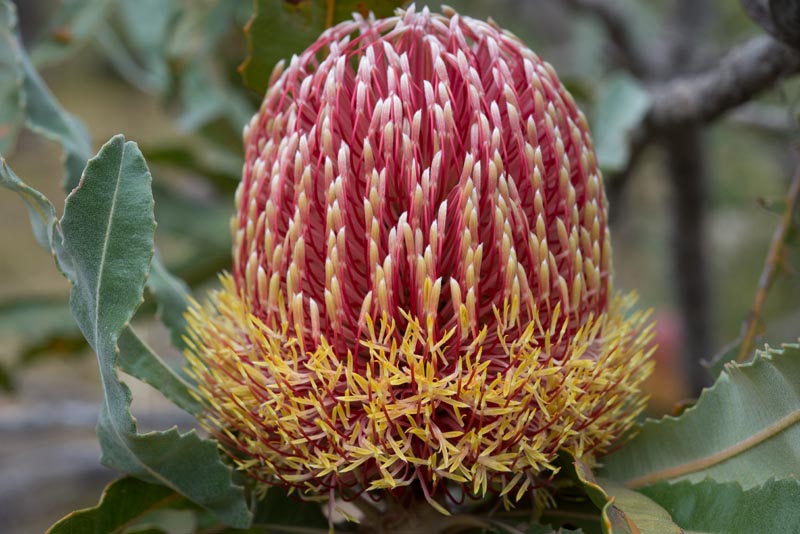
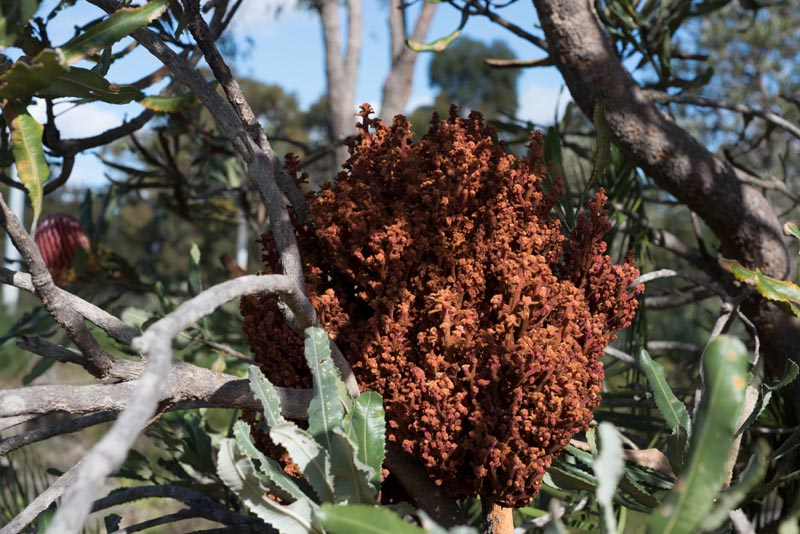

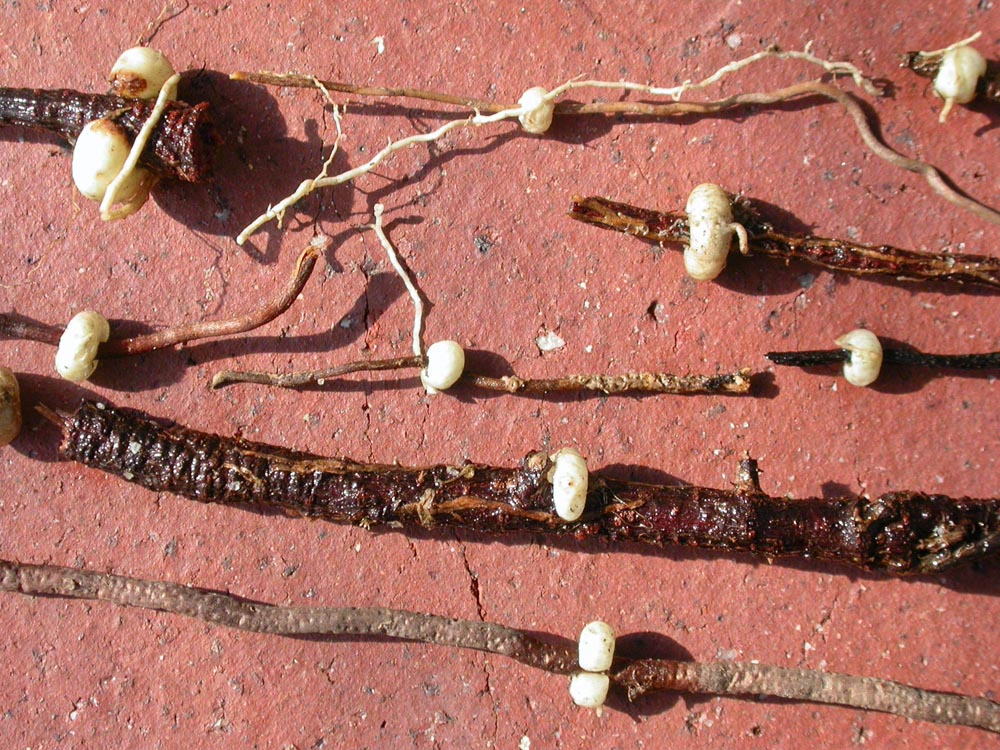

 Mark Brundrett
Mark Brundrett